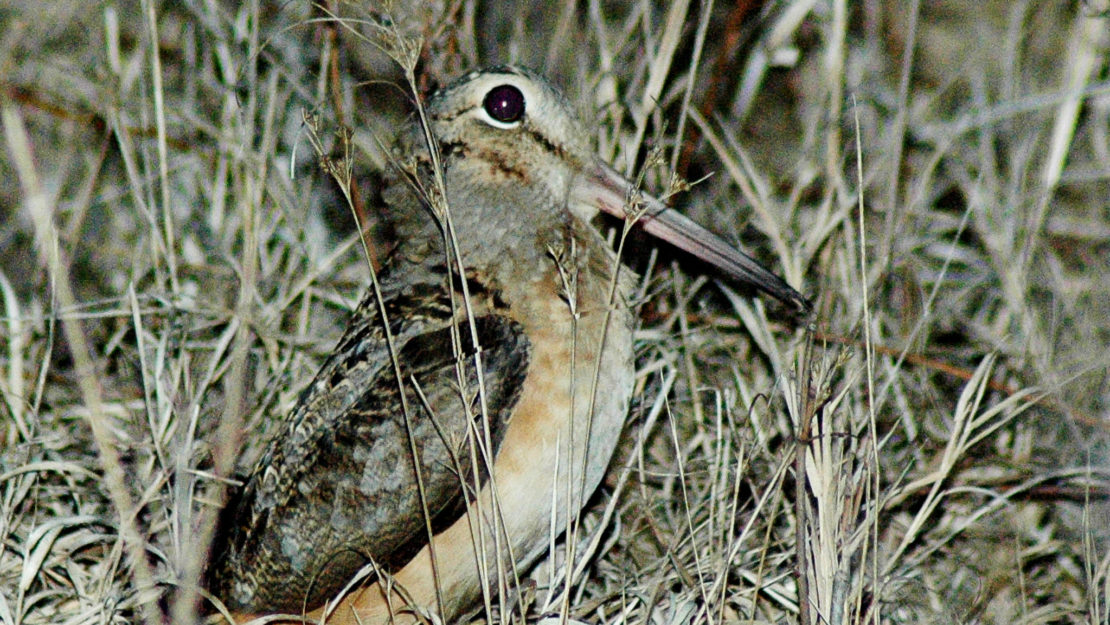Species Highlight: The American Woodcock

By Tarryn Hanson, Rochester Maples Field Crew Leader / AmeriCorps Member
During college, the focus of my education was on wildlife and now during my work at the Corps I work primarily with habitats. Due to this I am always keeping an eye out in the field for different species, tracks, scat, or other animal signs. This spring as the birds return, I am always identifying the ones seen and heard by my crew and I am always excited to share with them what I know about animals and their behaviors and preferred habitats. One species we have seen many times over the last few weeks is the American Woodcock.
The American Woodcock is categorized as a shorebird, which all are small/medium birds, with long legs and long narrow beaks. These traits are advantageous for movement through a variety of sandy, rocky, or muddy terrains as well as foraging from a height and having the ability to probe and search for prey. Although they are a shorebird, woodcocks are one of the only birds in this grouping which are not found on water edges and shorelines. They also are much shorter and rotund than other shorebirds which have a more graceful and elegant appearance. The woodcock is one of the most secretive shorebirds and are found living inland, in heavy foliage and brushy cover in forested habitats. They are so good at camouflaging among leaf litter that you can get within a few feet of them before they will flush. Every time we have come across one while doing project work, we were right next to it, and only saw them when they flew away.
American Woodcocks are primarily ground dwelling and both nest and forage on the forest floor. Like other shorebirds, the woodcock uses flight primarily to quickly flee short distances, or as a mating display in air. They do not vocalize while in flight, but their wing flaps produce a repetitive twittering sound when they initially take flight, and during certain aerial movements. Both aerial and terrestrial mating displays occur at dusk, in open grassy areas. Everything about the American Woodcock and their behavior is designed to be elusive and hard to find, but they range all over Minnesota; maybe if you get lucky enough you might stumble across one and see one of the most unique looking birds in the state.
